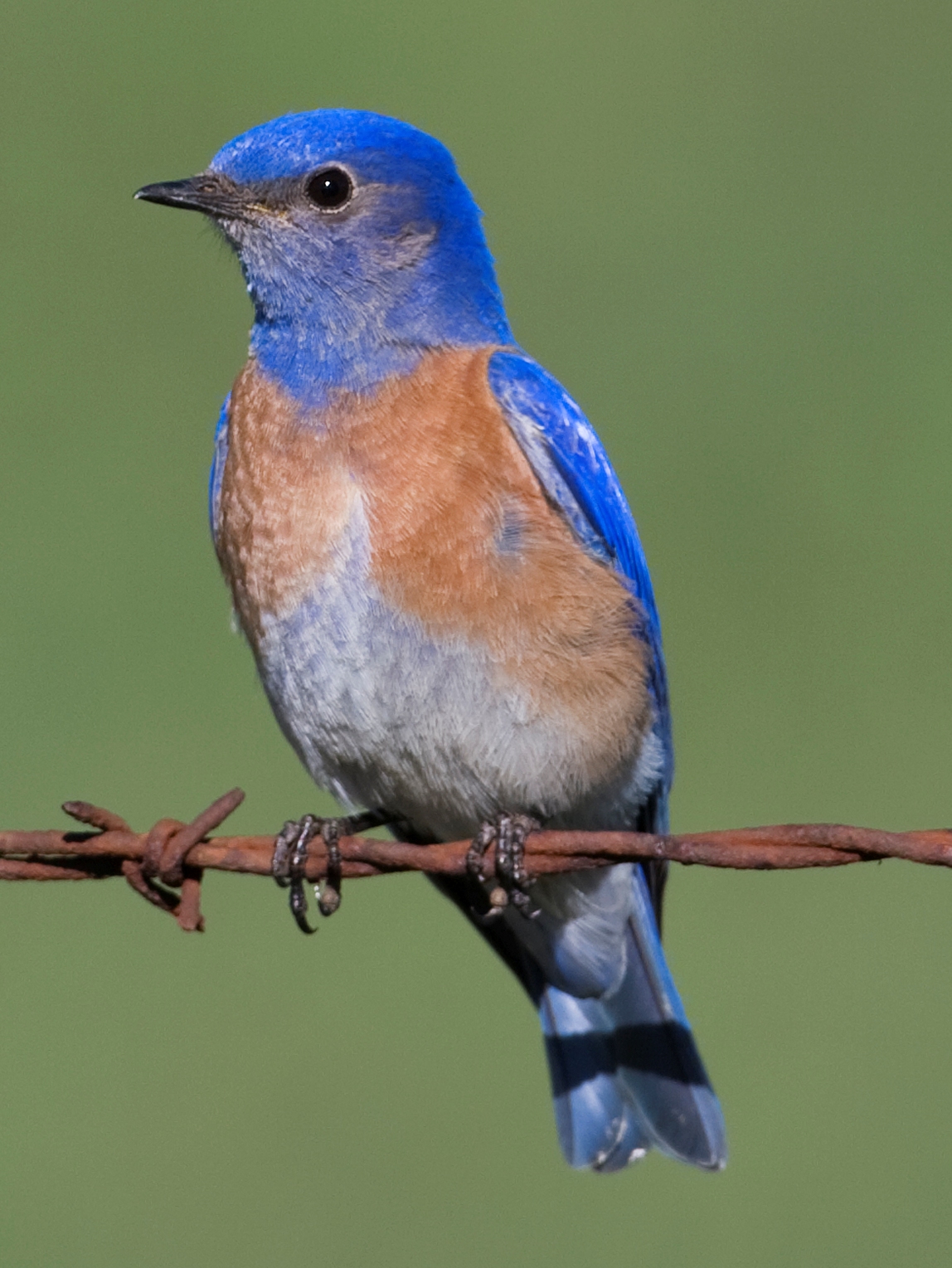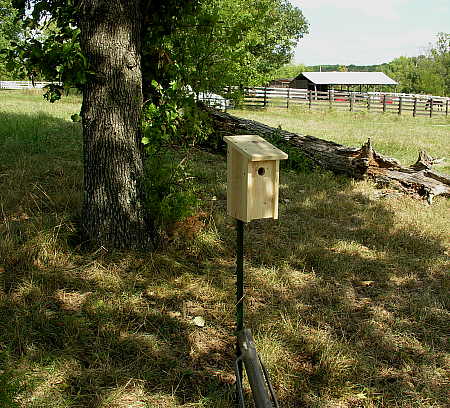The song is utter pap, and not what I'm wondering about. I am, in fact, thinking about bluebirds.
My mom often says that bluebirds are not so common anymore, that she might see blue jays out & about, but she hardly ever sees a bluebird.
So what's up with that? Where do they live, and where might it be possible to still see one?

A male Eastern Bluebird. How pretty! No wonder my mom gets excited when she thinks she's seen one.
(Photo from the North American Bluebird Society)

This map shows where the Eastern Bluebird lives in the Western Hemisphere. Some Eastern Bluebirds also live in Europe.
(Map from the Cornell Lab of Ornithology)
- There are three types of bluebirds that live in the United States: Eastern Bluebird, the Western Bluebird, and the Mountain Bluebird. Sounds like they live according to the time zones, doesn't it?
- The bluebird has a bright blue back, reddish-orange feathers at the top of the breast, and white feathers at the belly. The female's feathers have a similar color pattern, but are not quite as bright as the male's.

The Western Bluebird (male) has orange on its chest, but the blue also extends around his neck under his chin.
(Photo from Wikipedia)

Where the Western Bluebird lives. Unlike their relatives to the east, Western Bluebirds like to live in forested areas.
(Map from the Cornell Lab of Ornithology)
- The Mountain Bluebird is the only one of the three types that doesn't have any orange or red on its chest.
- The female Mountain Bluebird is almost entirely gray, with some flashes of bright blue on her back.

The Mountain Bluebird (male) is almost all bright blue. He's almost too blue to be believed!
(Photo from Wikipedia)

The Mountain Bluebird's habitat in the Western Hemishere. They prefer open areas like meadows, where they can spot lots of bug activity.
(Map from the Cornell Lab of Ornithology)
- Bluebirds are a member of the thrush family, which means they are related to robins. They are more shy than robins, though. Most people say that when they get within 20 feet of a bluebird, the bluebird will fly away. That's probably one reason why you don't see them very often.
- Another reason is their habitat is going away. Bluebirds like to nest in holes made by other birds. These are typically holes bored by woodpeckers into old trees. However, most old trees are cut down to make way for new developments or to keep old branches from falling on people or their houses. So there are fewer places for bluebirds to nest.
- What nesting places are available, bluebirds have to compete with other birds to get. House Sparrows and European Starlings both like to nest in the same kinds of places that bluebirds do, but the sparrows and the starlings are both very aggressive, and they'll chase away the bluebirds and sometimes even kick them out of an established nest.
- House Sparrows are not actually sparrows but are Old Weaver Finches. They were brought over to the United States from England in the 1850s to try to control insects that were destroying crops.
- Unfortunately, the sparrows reproduced at alarming rates because they had very few predators in this land, and not only did they not help control the insects, they caused even more damage to the fruit and its trees. And they took over the nesting sites of the birds that did help to control the insects. Oh, people.

An Eastern bluebird, judging us not.
(Photo from Flighty Thoughts from the Bird Lady)
- In the spring and summer, bluebirds eat insects, earthworms, and snails. Insects are plentiful enough.
- Bluebirds keep a sharp eye out for insects and other prey. Sometimes they hover above the ground, looking for something tasty, and then they'll snap it up and swoop back up to a branch and eat it. Or they may spot it from their perch, swoop down to grab it, and fly back up.
- In the winter, bluebirds eat wild berries (elderberries, poison oak berries, mistletoe, juniper berries, blackberries, blueberries, dogwood berries, etc.). Again, because there are fewer and fewer wild lands about, there aren't as many wild berries for the birds to eat.

Two female Eastern bluebirds in a Fraser fir tree.
(Photo by KVAWARRE2P, from Seahorsekisses)
- If you want to give bluebirds more things to eat, you can plant these sorts of berry bushes in your yard. Bluebirds will also eat suet and mealworms, if you want to make those available.
- Fortunately, bluebirds will also nest in houses that people build. And more people have been learning about the bluebirds and how to build nesting boxes that the bluebirds will like. If you want to learn how to build a nesting box that will attract bluebirds, the North American Bluebird Society and the Bluebird-L Reference Guide have lots of helpful and important tips.

Bluebird nesting box. Notice that there's no perch. That's important because sparrows like nesting boxes with perches, so if you leave off the perch, you're more likely to get a bluebird than a sparrow.
(Photo from Ranch Ramblins, from a page about how this blog owner built not just one bluebird perch but a trail of perches in Oklahoma. Lots of photos & tips)
Sources
North American Bluebird Society and the Bluebird-L Reference Guide
Cornell Lab of Ornithology, All About Birds, Eastern Bluebird
Wild Birds Forever, Attracting Bluebirds
Nature Works, Mountain Bluebird - Sialia currucoides
Las Pilitas, Western Bluebird, Sialia mexicana
BirdWeb: The Birds of Washington State, Western Bluebird
Mathew Tekulsky, Birding Column: Mesmerized by Western Bluebirds, National Geographic News, June 22, 2004
hi! Nice posting!I love bluebirds!!!!
ReplyDelete